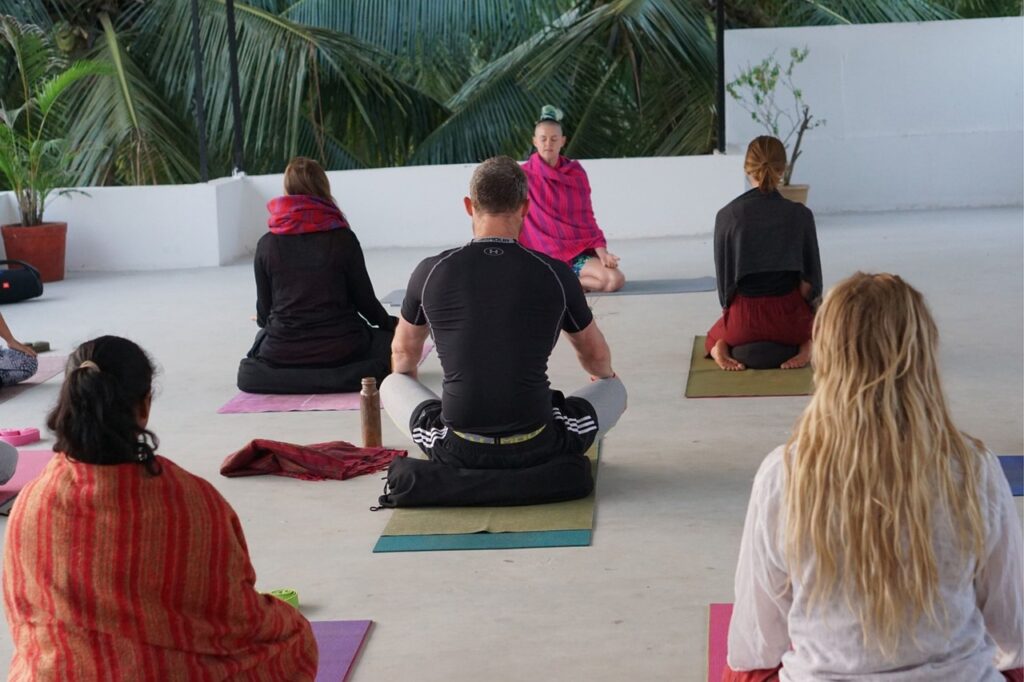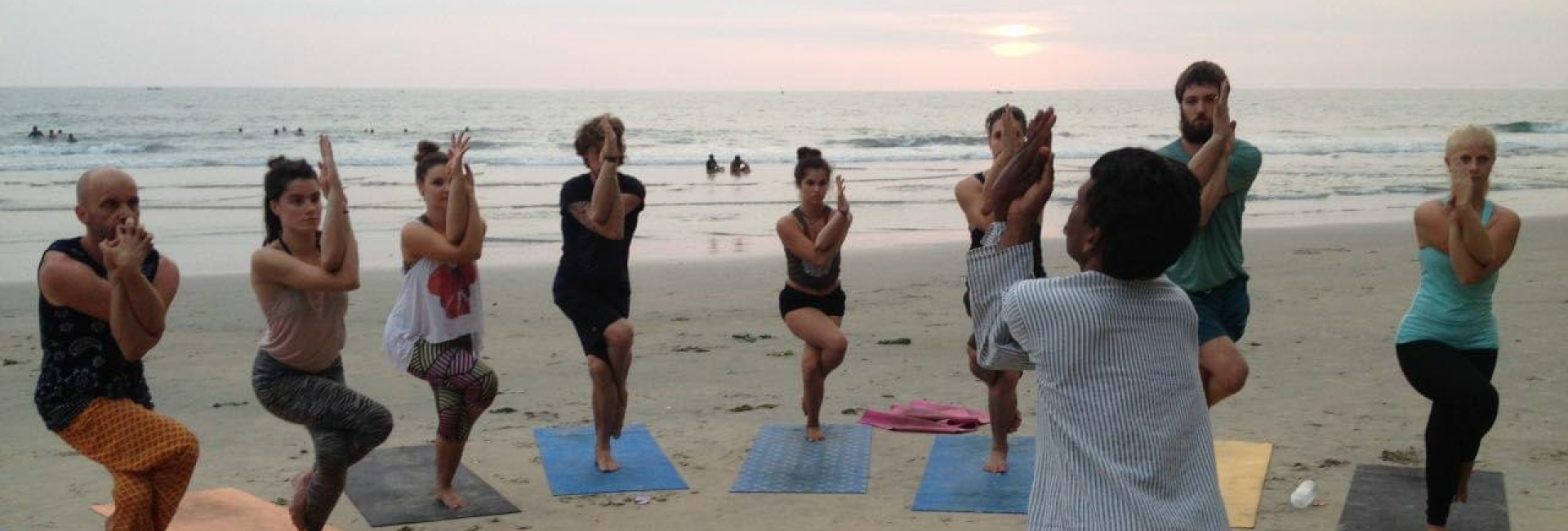Being an age-old wellness practice, yoga has emerged to become one of the bests to keep your mind, body, and soul healthy. If you are a beginner, starting with your yoga journey can be both overwhelming as well as exciting. But the one question that will often come to your mind while being on this journey is “how often should I do Yoga?”
There are numerous factors on which the answer to this question depends. These factors include fitness level, energy level, schedule, personal goals, and lifestyle of any individual. With the help of this article, you will get insights about how often you should practice yoga and how to progress safely.
Understanding your Goals

Before jumping into the dynamics of yoga practices, understand your body and define your wellness goals. It is essential to determine your goals so that you can practice yoga accordingly. The best way to do that is ask yourself why you want to learn yoga? Are you looking to increase flexibility, wish to reduce or gain body fat, or want mental rejuvenation to avoid life stress? Answering these questions will determine the intensity, frequency, and duration of your yoga session.
Some common goals and their significance are mentioned below:
- Mobility and Flexibility- If you wish to have a flexible body and also want to increase the mobility of your muscles, then being consistent is the ideal way to achieve that. Staying regular with your yoga practice, at least 3-4 days a week, will help you improve your bodily movements and relax your muscles from any unwanted strain as well. Focus on practicing the stretching based yoga style like Hatha or Vinyasa yoga and you will be able to achieve noticeable changes in your body’s flexibility.
- Mental Relaxation and Stress Relief- Yoga is an excellent practice for reducing stress and rejuvenating your entire body. For mental relaxation, indulge in the deep sessions of Pranayama and Meditation along with some basic yoga poses. This will help you calm your mind and allow you to think with clarity. In the hustle and bustle of today’s lifestyle, it is important to take out some time and pause a little, in order to be more productive on a daily basis. For enhancing your mental health and having an internal balance, regular sessions of gentle meditation and pranayama are highly beneficial. Along with this, yoga styles like Vinyasa yoga and Restorative yoga also assists in calming your nervous system.
- Weight Gain/Loss and building Strength- If you wish to improve the strength of your muscles and are looking to shred or gain weight, then practicing the dynamic yoga styles like Ashtanga and Power yoga are mandatory. Make sure to incorporate the dynamic sessions at least 4-6 days a week in order to see better results. These yoga styles will enhance the strength of your muscles, tone your body, and provide endurance. This will allow you to achieve your desired goals as soon as possible. Along with this, incorporate a healthy lifestyle to boost the benefits of these yoga asanas.
- Improved Posture- For this, try yoga asanas that target strengthening your core and back. This will help you to reduce stiffness in your body, ultimately improving the posture of your body. Especially for your back, you must practice the dynamic yoga asanas at least 2-3 days a week for enhanced results.
- Overall Wellness and Longevity- If you wish to improve your overall wellness without specifically targeting any issue, moderate frequency of yoga sessions of at least 3-4 days are sufficient. This will support a sustainable lifestyle for you and will have a great combination of flexibility, restorative, and muscle strengthening yoga asanas.
Frequency Recommendations for Beginners

Yoga is the kind of wellness practice which can be performed in different styles and forms. As mentioned earlier, understanding your goals will decide the frequency with which you should practice yoga on a regular basis. However, as a beginner, there are some recommendations for frequency of yoga practice which you can follow. This will help you get habitual of the yoga sessions and become a consistent practitioner.
Starting your journey with 3-4 yoga sessions in a week
If you are a complete newbie and have no idea about the basic yoga asanas as well, then having a sustainable approach to it is the best option. This will allow your body to get used to the movements and prevent stiffness or soreness in your muscles. Practicing basic yoga asanas 3-4 days a week will not only help you adapt your body to the movements but will also build consistency in you. Focus on understanding the fundamental poses, basic breathing techniques, and meditation practices, in order to build a stronger base for the future.
4-5 yoga sessions per week
Once your body is habitual of the routine, you can increase the frequency of practicing yoga to 4-5 times a week. Along with this, elevate your practices by adding some dynamic movements in your preferred yoga style. Since your muscles will be accustomed to the routine, addition of the new movements will also reduce the risk of any injury during the session. Allow your body to perform different yoga styles that target several health goals.
Daily yoga sessions
If you are a beginner, it is not necessary to practice yoga on a daily basis. While daily sessions can be highly beneficial, it is essential to listen to your body and practice the movements accordingly. If you still choose to practice yoga on a daily basis, then make sure to alternate between the gentle and intensive yoga styles. This will allow your body to recover in between and enhance your overall involvement in the session.
Signs you might be Overdoing Yoga

While consistency is the key in terms of yoga journey, over-practicing it can lead to excessive burnouts or even injuries. Here are some signs which indicate that you are overdoing your yoga practices.
- Constant Muscle Soreness- If you are regular in your yoga sessions and still experience muscle soreness, then it might be a sign that you are overusing your muscles. It is important to listen to your body and take sufficient rests in between your sessions.
- Persistent Fatigue and lack of motivation- If you are noticing that you are constantly drained before and after the yoga session or highly demotivated to continue with the asanas, then it might be a sign for resting.
- Difficulty in maintaining proper posture while performing asana- If you are struggling with maintaining the yoga pose, balance of your body, or alignment, this might be a sign of overexertion. Take the required break so that you can prevent the risk of severe injuries.
- Frequent dizziness and headaches- Dehydration, lack of sleep, constant fatigue, or poor breathing techniques are the main reason behind constant headaches and dizziness. It implies that you need to slow down and listen to your body.
- Lack of Enjoyment- If yoga starts to feel like a burden to you, rather than a relaxing practice, then it is time to take a rest and adjust your routine accordingly.
As a Beginner, How to Motivate Yourself in Doing Yoga?
Embarking on a yoga journey, especially as a complete newbie can be overwhelming. It is important to take baby steps towards your goal and not to burden yourself with major expectations.
Incorporating yoga practices require proper discipline and dedication, which can be challenging sometimes. In order to tackle this, here are some tips you can consider to motivate yourself in practicing yoga on a daily basis.
- Have clarity with your goals- It should be your priority to set some goals regarding your wellness, so that you can start practicing yoga accordingly.
- Take baby steps- Begin your yoga practices with short sessions of 15-20 minutes a day and then gradually increase the time according to your body.
- Make a Routine- A routine will help you be consistent and disciplined with your yoga practices. It is easier to stick to your sessions on a regular basis if you have a fixed schedule.
- Take Guided Sessions- Attend in-person sessions under an experienced yoga instructor or take online sessions to learn the fundamentals of yoga in a detailed manner. This will help you build the perfect base for practicing the more dynamic yoga styles in the future.
- Celebrate Small Wins- Keep checking your progress and acknowledge them. This will motivate you to practice yoga with more enthusiasm and interest.
- Cultivate Mindfulness- Constant reminding of the benefits of yoga that you experience will reinforce your commitment towards it.
For a beginner, the frequency of practicing yoga depends on various factors like their wellness goals, energy levels, schedule, and body requirements. You should not consider it as a mandatory chore but as a mindful activity which will improve your overall wellness. The first and foremost thing is to set your goals and work on your yoga practice accordingly. Listen to your body, take rest breaks, and don’t overexert yourself during this wellness journey.











